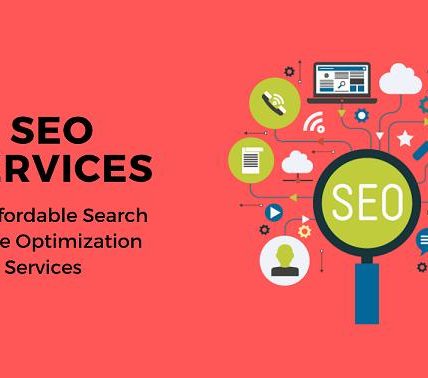Nowadays, in the digital era, search engine optimization (SEO) is crucial to success online. Conventional SEO techniques emphasize the use of keywords and backlinks. But as technology developed, data-driven SEO surfaced, providing more strategic information. This method guarantees improved performance and higher results by using advanced analytics to fine-tune SEO methods. Let’s explore how your online presence can be transformed by data-driven SEO.
Understanding Data-Driven SEO
Data-driven SEO uses real-time data and analytics to guide SEO strategies. Instead of relying on guesswork, this method involves analyzing various metrics to make informed decisions. By understanding user behavior, search trends, and website performance, businesses can create more effective SEO campaigns.
Note:- Ready to elevate your SEO strategy with advanced analytics and data-driven insights? Partner with Prontosys, a leading SEO company Dubai. Our team of experts will help you achieve higher rankings, increased traffic, and better ROI. Contact us today to get started on your journey to online success!
Why is Data-Driven SEO Important?
- Accuracy and Precision: Data-driven SEO provides accurate insights, allowing businesses to target the right audience effectively.
- Better ROI: By focusing on what works, companies can achieve a higher return on investment (ROI) for their SEO efforts.
- Continuous Improvement: Regular analysis and updates ensure that SEO strategies remain effective and adapt to changing trends.
Key Components of Data-Driven SEO
Advanced Analytics Tools
To implement data-driven SEO, it’s essential to use advanced analytics tools. These tools collect and analyze data, providing valuable insights. Some popular tools include:
- Google Analytics: Offers detailed insights into website traffic, user behavior, and conversion rates.
- Google Search Console: Provides data on search performance, including keywords, impressions, and clicks.
- SEMrush: A comprehensive tool for keyword research, competitor analysis, and site audits.
User Behavior Analysis
Understanding how users interact with your website is crucial for effective SEO. By analyzing user behavior, you can identify areas for improvement. Key metrics to monitor include:
- Bounce Rate: The percentage of visitors who leave your site after viewing only one page. A high bounce rate indicates that your content or user experience needs improvement.
- Session Duration: The average time a user spends on your site. Longer sessions often mean that users find your content valuable.
- Pages Per Session: The number of pages a user views in one session. Higher numbers suggest that users are exploring your site more thoroughly.
Keyword Performance
Keywords remain a vital part of SEO. However, data-driven SEO goes beyond basic keyword research. It involves analyzing keyword performance to refine your strategy continually. Important factors to consider are:
- Search Volume: The number of times a keyword is searched. High search volume indicates popular keywords.
- Click-Through Rate (CTR): The percentage of users who click on your link after seeing it in search results. A high CTR suggests that your title and meta description are compelling.
- Keyword Difficulty: A measure of how challenging it is to rank for a keyword. Balancing high-volume keywords with lower-difficulty ones can enhance your SEO strategy.
Implementing Data-Driven SEO Strategies
Content Optimization
Content remains king in the world of SEO. Data-driven insights help you create content that resonates with your audience and ranks well in search engines. Key steps for content optimization include:
- Keyword Integration: Use relevant keywords naturally within your content. Avoid keyword stuffing, as it can harm your rankings.
- Content Quality: Focus on creating high-quality, valuable content that addresses user needs. Use data to identify popular topics and content gaps.
- Content Structure: Organize your content with clear headings and subheadings. This improves readability and helps search engines understand your content better.
On-Page SEO
On-page SEO involves optimizing individual web pages to improve their search engine rankings. Data-driven insights can guide you in making effective on-page optimizations. Key areas to focus on are:
- Title Tags and Meta Descriptions: Use compelling, keyword-rich titles and meta descriptions. These elements play a crucial role in attracting clicks from search results.
- Header Tags: Use H1, H2, H3, and H4 tags to structure your content. This not only enhances readability but also helps search engines index your content more effectively.
- Internal Linking: Create internal links to related content within your site. This helps users navigate your site and improves SEO by distributing page authority.
Technical SEO
Technical SEO focuses on the backend elements of your website that affect its performance and search engine visibility. Data-driven technical SEO involves regular audits and updates to ensure optimal performance. Key aspects to address include:
- Site Speed: Fast-loading websites provide a better user experience and rank higher in search results. Use tools like Google PageSpeed Insights to monitor and improve site speed.
- Mobile-Friendliness: Ensure your website is mobile-friendly, as a significant portion of users access the internet via mobile devices. Google’s Mobile-Friendly Test can help you assess your site’s performance on mobile.
- URL Structure: Use clean, descriptive URLs that include relevant keywords. This makes it easier for search engines to understand and index your content.
Measuring Success with Data-Driven SEO
Tracking Key Metrics
To measure the success of your data-driven SEO efforts, it’s crucial to track key metrics regularly. Important metrics to monitor include:
- Organic Traffic: The number of visitors who arrive at your site through search engines. Increasing organic traffic indicates successful SEO efforts.
- Conversion Rate: The percentage of visitors who take a desired action, such as making a purchase or signing up for a newsletter. Higher conversion rates suggest effective SEO and user experience.
- Backlinks: The number and quality of external sites linking to your content. Quality backlinks improve your site’s authority and search engine rankings.
Regular SEO Audits
Conducting regular SEO audits helps identify areas for improvement and ensures your strategies remain effective. An SEO audit involves:
- Analyzing Site Performance: Use tools like Google Analytics and SEMrush to assess site performance, identify issues, and track progress.
- Reviewing Content Quality: Evaluate the quality and relevance of your content. Update outdated content and remove low-performing pages.
- Assessing Technical Aspects: Check for technical issues such as broken links, slow page speeds, and mobile-friendliness. Address these issues promptly to maintain optimal performance.
Adapting to Changes
SEO is an ever-evolving field, and staying updated with the latest trends and algorithm changes is crucial. Data-driven SEO allows you to adapt your strategies based on real-time data. Key steps to stay ahead include:
- Monitoring Industry Trends: Keep an eye on industry news and updates. Follow reputable SEO blogs and forums to stay informed.
- Testing and Experimenting: Continuously test different strategies and analyze their performance. Experiment with new keywords, content formats, and on-page optimizations.
- Learning from Competitors: Analyze your competitors’ SEO strategies. Identify their strengths and weaknesses, and apply those insights to your strategy.
Conclusion
Data-driven SEO is a powerful approach that leverages advanced analytics to enhance your online presence. By understanding user behaviour, keyword performance, and technical aspects, you can create more effective SEO strategies. Regular tracking and adaptation ensure that your efforts remain relevant and impactful. Embrace data-driven SEO to unlock new opportunities for growth and achieve long-term success in the digital landscape.
Also read:- The Art of Engagement: Building Meaningful Connections Through Social Media in Dubai





